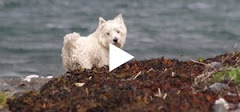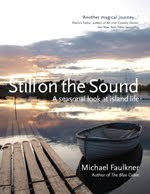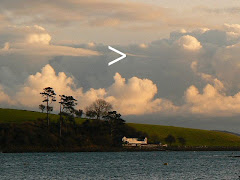Loch Coille Bharr, Knapdale Forest, Argyll
Further to last Wednesday's post:-
I once made a return visit with my brother to Quilchena, the ranch in British Columbia where I had worked during my gap year. Some time had passed, but the place was largely unchanged. Even some of the hands were still there. Maurice Roth, the farm boss, had retired but apparently lived in the same house - so I sought him out. The last time I had seen Maurice he was digging irrigation channels, but now he showed his age and, according to him, he felt it too. He was stooped, and a little vague, but he had the same twinkle in his eye and he said, 'Wanna see what I've been up to?' We followed him to his shed, and there on the bench, salted and stretched, were half a dozen beaver pelts.
Beaver kits, Knapdale Forest, Argyll
Photo courtesy Steve Gardner
I had never seen a beaver before, alive or dead, and I never thought to see one again. But on Wednesday, Lynn and I were taken deep into Knapdale Forest, Argyll by our friends Simon and Namaste, on a mission on which no-one in Britain, until eighteen months ago, could possibly have gone during the preceding four hundred years: beaver-spotting. The European beaver is back, courtesy of a project run by the Royal Zoological Society, Scottish Wildlife Trust and Scottish Natural Heritage, under the unbrella of the Scottish Beaver Trial; and since May 2009, sixteen individuals (from Norway) have been released. Despite initial (and predictable) setbacks, the beavers have bred and are doing well.
They have certainly been busy. This impressive dam on Loch Coille Bharr (to the left of the trees, above), by which the colony contrived a five-foot change in water level, is just the most graphic result of their efforts - we also saw several felled birch trees, a scattering of work-in-progress branches, and a lodge. Extraordinary - we were all spellbound.
Beavers are crepuscular, meaning they are most active at dawn and dusk, so we had timed our arrival for just before dark, and we decided to crouch in silence amongst the trees at the loch's edge, near the lodge (above), and hope for the best. Even Eddie didn't move a muscle. There was hardly a ripple on the water, and as darkness fell Lynn saw just a head break the surface for a moment, and disappear. That's all we got. When it was black dark, we called it a day and walked back to the car, resolved to try again in summer, when we can take a tent and catch both dusk and dawn.
Wonderful. Who would have thought?


















